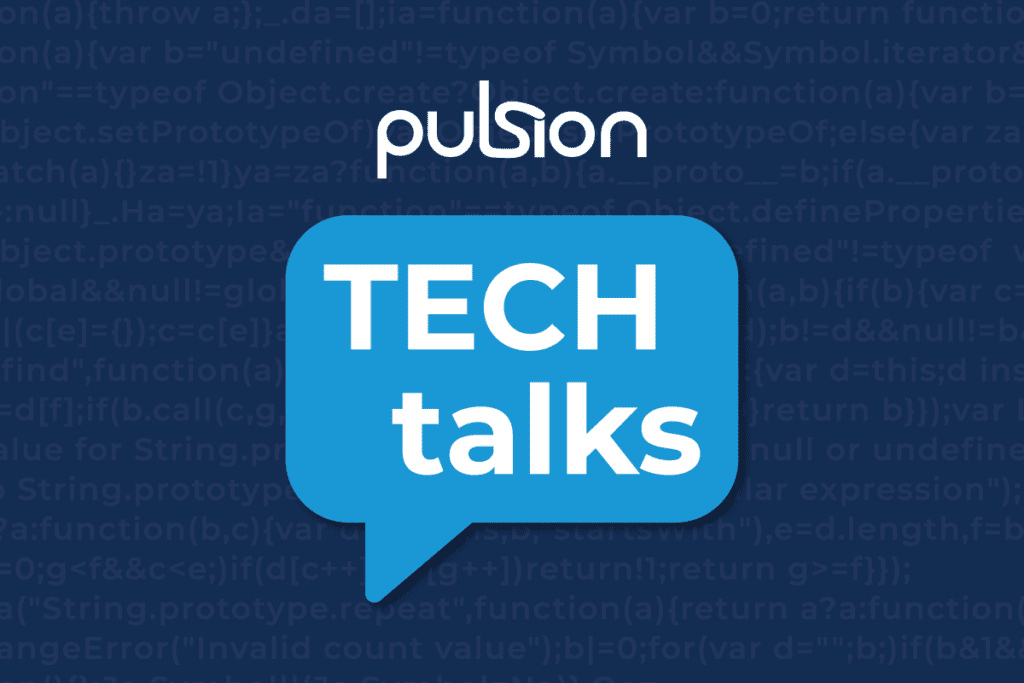In 2024, cloud migration benefits are plenty and selecting an appropriate cloud migration plan and strategy will help avoid cloud migration failures.
Cloud migration services have evolved into a digital enhancement and strategic move for businesses worldwide.
Here at Pulsion, we offer a digital strategy consultation to facilitate the migration to the cloud using Microsoft Azure, AWS or Google Cloud.
Opting to choose cloud migration consulting enhances efficiency, cost-effectiveness, agility, and innovation.
Why migrate to the cloud?
This transformative process changes the way organisations operate, innovate, and stay competitive. The imperative is cost-effectiveness, agility, and innovation. These are not just buzzwords; they are the pillars upon which successful businesses are built in the digital age.
Adopting the right cloud solutions and a well-defined cloud strategy is crucial when transitioning data to the cloud. Losing data can cause a business to fail and not something anyone wants to experience.
Cloud migration strategies streamline operations by eliminating the constraints of traditional on-premises setups. It allows for the seamless integration of applications and services, and fosters collaboration and efficiency. Centralised data management and accessibility from anywhere allows organisations to break free from the shackles of physical infrastructure limitations.
Cloud migration helps businesses to shift from capital-intensive models to more flexible and scalable operational expenses. By paying for resources as needed, organisations can optimise costs and redirect resources to strategic initiatives.
Cloud migration empowers businesses to scale up or down swiftly in response to market changes. Whether they adapt to increased demand or pivot to new opportunities, the cloud provides the flexibility needed for sustained growth.
Innovation is no longer a luxury; it’s a survival strategy. This strategy opens the door to a plethora of innovative tools, services, and development frameworks. From advanced analytics to machine learning, businesses can leverage cutting-edge technologies without the burden of extensive infrastructure investments.
What is cloud migration strategy?
Cloud migration strategy is the relocation of an organisation’s digital assets, services, databases, IT resources, and applications from on-premises or co-located infrastructures to a cloud-based environment.
The process involves moving key components of an organisation’s digital ecosystem to a virtual environment hosted by third-party providers. These components range from essential IT resources to intricate databases and mission-critical applications.
The scope of cloud migration strategy encompasses a range of digital elements that constitute the backbone of modern enterprises, including:
- Digital Assets are all forms of digital content owned or used by the organisation, such as documents, multimedia, and other data repositories. Cloud migration ensures these assets are seamlessly transitioned to a virtual storage infrastructure.
- Services and functionalities that organisations offer to their users or customers are an integral part of the migration process. This can involve the migration of web services, APIs, or other digital services crucial for business operations.
- Databases are the heart of an organisation’s data management, databases house critical information. Migrating databases to the cloud involves careful planning to ensure data integrity, security, and accessibility.
- IT Resources includes the migration of servers, networking components, and other IT infrastructure elements. Cloud migration strategy allows organisations to offload the burden of maintaining physical hardware while gaining scalability and flexibility.
- Application migration is a key aspect, ensuring that software critical to business operations seamlessly operates in the cloud environment. This may involve adapting applications to leverage cloud-native features for optimal performance.
As businesses grapple with the demands of the digital era, understanding these fundamental aspects of cloud migration becomes paramount for informed decision-making and strategic planning.
Why Cloud Migration Strategy?
Cloud migration promises an array of compelling benefits that reshape the way organisations operate in the digital landscape. Here are some key reasons why businesses are increasingly drawn to the prospect of migrating to the cloud:
- Reduction in Total Cost of Ownership (TCO): Cloud infrastructure eliminates the need for hefty upfront investments in physical infrastructure. Cloud service providers offer scalable solutions that allow organisations to pay for the resources they consume, which reduces the total cost of ownership and frees up financial resources for strategic initiatives.
- Faster Time to Delivery: A cloud platform accelerates the pace at which organisations can deliver products, services, and solutions to the market. Leveraging cloud services make development cycles become more agile as it enables rapid prototyping, testing, and deployment.
- Enhanced Opportunities for Innovation: Organisations can leverage advanced cloud-native features, such as machine learning, artificial intelligence, and data analytics, to drive innovation. Cloud providers continually update their services to ensure access to cutting-edge technologies.
- Increased Agility and Flexibility: Traditional IT infrastructure often struggles to keep pace with the dynamic demands of modern businesses. Cloud migration enables organisations to scale resources up or down based on real-time requirements. This flexibility allows for optimal resource allocation and ensures that businesses can adapt swiftly to changes in workload and operational needs.
- Meeting Changing Consumer and Market Demands: Consumer preferences and market dynamics evolve rapidly. Cloud platform migration equips businesses with the agility to respond promptly to these changes and scale up to meet increased demand or pivot strategies in response to market shifts.
Benefits extend beyond cost savings to encompass the empowerment of organisations to innovate, respond swiftly to market dynamics, and deliver value to customers at an unprecedented pace.
Switching to Cloud Services: The Migration Process
Successful cloud computing encompasses strategic planning, thorough assessment, and seamless execution. Here are the key steps that organisations follow in the cloud migration process:
- Define Strategy and Build the Business Case
Clearly define the objectives of the cloud migration, whether it’s to enhance scalability, reduce costs, or leverage advanced cloud-native features.
Build a robust business case for each application or workload slated for migration. This involves assessing the total cost of ownership (TCO) on the cloud compared to existing on-premises infrastructure.
- Discovery and Assessment
Conduct a comprehensive assessment of existing IT infrastructure to identify resources, dependencies, and potential challenges. This phase involves evaluating the readiness of applications and data for migration.
Perform a thorough risk analysis, considering factors such as data security, compliance requirements, and the potential impact on business operations. Identify any gaps in skills or technologies that need addressing.
- Cloud Migration Execution
Develop a detailed roadmap outlining the migration process, including the sequence of workloads, preferred cloud architecture, and any necessary modifications to applications or data.
Choose the appropriate migration technique based on the specific needs of each workload. This may involve lift-and-shift for a quick transition or refactoring to leverage cloud-native features.
Each of these steps plays a critical role in ensuring a smooth and successful cloud migration. Organisations can unlock the full potential of the cloud by:
- defining a clear strategy
- conducting a thorough assessment
- and executing the migration with precision
Types of Cloud Migration
When delving into the realm of cloud migration, it’s essential to comprehend the diverse types and models that shape the landscape. Here’s an overview of the key classifications:
Deployment Models–
- Public Cloud: Organisations leverage computing resources from third-party service providers. This model offers scalability, cost-effectiveness, and accessibility over the internet. Ideal for applications with variable workloads and businesses seeking cost-efficient solutions without extensive infrastructure investments.
- Private Cloud: Resources are dedicated to a single organisation that provides enhanced control, security, and customisation. It can be managed internally or by a third-party provider. Suited for industries with stringent security and compliance requirements, such as finance or healthcare.
- Hybrid Cloud: Combining elements of both public and private clouds, this model allows data and applications to be shared between them. It offers flexibility and optimisation of existing infrastructure. Ideal for businesses that need a balance between scalability and control, enabling them to run critical workloads on-premises while utilising the cloud for others.
- Multi-Cloud: Involves using services from multiple cloud providers. This approach mitigates vendor lock-in, enhances redundancy, and provides a broader range of services. Organisations looking to avoid dependency on a single cloud provider, diversify risk, and cherry-pick services from different providers.
Cloud Services Categories
- SaaS (Software as a Service): Software applications delivered over the internet on a subscription basis. Users access the software through a web browser without worrying about maintenance or updates. Commonly used for email services (e.g., Microsoft 365), customer relationship management (CRM), and collaboration tools.
- PaaS (Platform as a Service): Provides a platform allowing customers to develop, run, and manage applications without dealing with complex infrastructure. It streamlines the development process. App development and deployment, database management.
- IaaS (Infrastructure as a Service): Offers virtualised computing resources over the internet. Users have control over operating systems, storage, and networking. Hosting websites, running applications, and storing data.
Migration Types
- Re-host (Lift & Shift): Involves moving applications from on-premises to the cloud without significant modifications. Quick and straightforward but may not fully leverage cloud capabilities.
- Re-platform: Adapting applications for the cloud environment to benefit from some cloud features. It balances speed and optimisation.
- Re-factor: Restructuring or rewriting applications to make them cloud-native, enhancing agility, scalability, and performance.
- Cloud-to-Cloud Migration: Shifting from one cloud provider to another, often driven by cost, performance, or service-related considerations.
- Uncloud: Involves migrating from the cloud back to on-premises infrastructure. Usually driven by changing business needs or cost considerations.
Understanding these deployment models, service categories, and migration types empower organisations to make informed decisions aligning with their specific requirements and objectives in the cloud migration journey.
Cloud Migration Strategies
There are diverse types and models that shape cloud environments. Here’s an overview of the key classifications:
Deployment Models include:
Public Cloud:
- Overview: Organisations leverage computing resources from third-party service providers. Multiple public cloud providers offer scalability, cost-effectiveness, and accessibility over the internet.
- Use Case: The public cloud is deal for applications with variable workloads and businesses seeking cost-efficient solutions without extensive infrastructure investments while still protective sensitive data.
Private Cloud:
- Overview: Resources are dedicated to a single organisation, providing enhanced control, security, and customisation. It can be managed internally or by a third-party provider.
- Use Case: Suited for industries with stringent security and compliance requirements, such as finance or healthcare.
Hybrid Cloud:
- Overview: Combining elements of both public and private cloud platforms, this model allows data and applications to be shared between them. It offers flexibility and optimisation of existing infrastructure.
- Use Case: Ideal for businesses needing a balance between scalability and control, enabling them to run critical workloads on-premises while utilising the cloud for others.
Multi-Cloud:
- Overview: Involves using services from multiple cloud providers. This approach mitigates vendor lock-in, enhances redundancy, and provides a broader range of services.
- Use Case: Organisations looking to avoid dependency on a single cloud provider, diversify risk, and cherry-pick services from different providers.
Service Categories include:
SaaS (Software as a Service): Software applications delivered over the internet on a subscription basis. Users access the software through a web browser without worrying about maintenance or updates. Commonly used for email services (e.g., Microsoft 365), customer relationship management (CRM), and collaboration tools.
PaaS (Platform as a Service): Provides a platform allowing customers to develop, run, and manage applications without dealing with complex infrastructure. It streamlines the development process. App development and deployment, database management.
IaaS (Infrastructure as a Service): Offers virtualised computing resources over the internet. Users have control over operating systems, storage, and networking. It is used for hosting websites, running applications, and storing data.
Migration Types include:
Re-host (Lift & Shift): Involves moving applications from on-premises to the cloud without significant modifications. Quick and straightforward but may not fully leverage cloud capabilities.
Re-platform: Adapting applications for the cloud environment to benefit from some cloud features. It balances speed and optimisation.
Re-factor: Restructuring or rewriting applications to make them cloud-native, enhancing agility, scalability, and performance.
Cloud-to-Cloud Migration: Shifting from one cloud provider to another, often driven by cost, performance, or service-related considerations.
Uncloud: Involves migrating from the cloud back to on-premises infrastructure. Usually driven by changing business needs or cost considerations.
Understanding these deployment models, service categories, and migration types empowers organisations to make informed decisions that align with their specific requirements and objectives in the cloud migration journey, or choose a hybrid cloud migration model.
Cloud Migration Phases
A good cloud migration strategy involves distinct phases, each playing a crucial role in the success of the endeavor. These are the four key phases:
Strategic Planning
This phase serves as the compass setting the direction for the migration. Organisations define their cloud objectives, assess the readiness of existing infrastructure, and establish a compelling business case for the move.
Activities include:
- Conducting a comprehensive assessment of current IT assets.
- Defining clear goals and objectives for the migration.
- Crafting a business case outlining expected benefits and potential challenges.
A strategic roadmap guiding subsequent actions and ensuring alignment with overarching business goals.
Discovery
In the discovery phase, organisations identify applications, data, dependencies, and potential bottlenecks.
Activities include:
- Creating an inventory of applications and data
- Assessing interdependencies between different components
- Evaluating performance metrics and potential optimisation areas
A comprehensive understanding of the existing environment, laying the foundation for meticulous planning and execution.
Migration Strategy
The migration phase marks the actual movement of applications, data, and processes to the chosen cloud environment. Organisations implement the migration strategy crafted during the planning phase.
Activities include:
- Executing the defined migration strategy, whether re-hosting, re-platforming, or re-architecting.
- Constant monitoring to ensure minimal disruption and swift issue resolution.
- Verifying the successful functioning of migrated components.
Successful migration of workloads to the cloud, with minimal impact on operations and end-users.
Optimisation
Optimisation is an ongoing process in which organisations refine and enhance their cloud operations based on real-time feedback and performance data.
Activities in the optimisation phase include:
- Continuous monitoring of cloud infrastructure and applications.
- Fine-tuning configurations to improve efficiency and cost-effectiveness.
- Implementing cloud-native features and services to boost performance.
A well-optimised cloud environment, continually evolving to meet changing business needs and leverage emerging technologies.
These four phases empower organisations to undertake a systematic and successful cloud migration. From laying the groundwork with strategic planning to the continuous refinement in the optimisation phase, each stage contributes to a seamless transition to the cloud, unlocking its full potential for enhanced efficiency, scalability, and innovation.
The 6 Rs of Cloud Migration Strategy
Crafting a robust cloud migration strategy involves strategic decisions on how to handle existing applications and workloads. Here are the 6 Rs that organisations often contemplate:
Re-host (Lift & Shift)
- Suitable for applications where minimal changes are required.
- When the current infrastructure is outdated, and a quick move to the cloud is essential without significant modifications.
Re-platform (Lift & Reshape)
- Relevant when optimisation is needed for cloud benefits.
- When the existing application architecture is compatible with the cloud, improvements can be made for enhanced performance and cost-efficiency.
Re-factor/Re-architect
- Appropriate for applications requiring significant architectural changes.
- The goal is to leverage cloud-native features, enhance scalability, and optimise performance.
Repurchase (Drop & Shop)
- Optimal for applications where shifting to a different product or service makes sense.
- Used when adopting a Software as a Service (SaaS) model offers more benefits than maintaining the current application.
Retire
- Applicable to applications that are no longer in use or provide marginal value.
- Used when it’s strategic to eliminate redundant applications, reducing maintenance costs and complexity.
Retain
- Relevant for applications integral to the current business processes.
- Used when the application, despite being on-premises, serves its purpose efficiently, and there’s no immediate advantage in migrating.
By aligning the migration strategy with specific objectives, organisations can make informed decisions that set the stage for a successful and tailored transition to the cloud.
Navigating Cloud Migration Challenges: A Roadmap to Success
A cloud migration journey brings forth various challenges for organisations. Here’s a roadmap to tackle some common obstacles:
Legacy Applications and Modernisation
- Challenge: Legacy applications may pose compatibility issues in the cloud environment.
- Roadmap: Conduct a comprehensive analysis of existing applications. Consider re-platforming or refactoring to align them with cloud-native features. Prioritise modernisation efforts based on critical business functions.
Security and Compliance Concerns
- Challenge: Ensuring data security and compliance during and after migration.
- Roadmap: Implement a robust security framework. Leverage cloud provider security features and adhere to compliance standards. Regularly audit and update security protocols to address evolving threats.
Complexity in Migrating and Estimating Effort
- Challenge: The migration process can be intricate and may lead to challenges in estimating time and effort accurately.
- Roadmap: Break down migration into manageable phases. Conduct pilot migrations to identify potential issues and refine the overall strategy. Collaborate with experienced cloud migration partners or use automation tools to streamline the process.
Gaining Business Support and Addressing Key Dependencies
- Challenge: Ensure alignment with organisational goals and garner support from key stakeholders.
- Roadmap: Develop a compelling business case that highlights the benefits of cloud migration, such as cost savings, scalability, and improved agility. Engage stakeholders early, address concerns proactively, and communicate the long-term advantages of the migration.
By adopting a phased migration approach, prioritising security, and fostering organisational alignment, businesses can transform migration hurdles into stepping stones toward a more efficient and resilient cloud environment
Cloud Migration Tools and Management
Ensuring a smooth transition to the cloud service demands strategic use of tools and meticulous management.
Role of Automated Management and Migration Tools
- Automation for Efficiency: Leverage automated tools to streamline various aspects of migration, from data transfer to application deployment. This minimizes manual intervention, reduces errors, and accelerates the overall process.
- Scalability and Resource Optimisation: Automated management tools help scale resources dynamically, aligning them with workload demands. This ensures optimal performance and cost-effectiveness in the cloud environment.
Importance of a Robust Cloud Journey Management Plan
- Strategic Planning: Develop a comprehensive management plan that aligns with your cloud migration strategy. Clearly define roles, responsibilities, and timelines. This plan should encompass the entire migration lifecycle, from preparation to ongoing optimisation.
- Continuous Monitoring and Optimisation: Implement tools for real-time monitoring of cloud resources and performance. Continuous optimisation based on insights from monitoring tools helps in refining the cloud infrastructure and maintaining cost-efficiency.
These tools enhance the efficiency of migration but also contribute to the long-term success of cloud adoption. By automating repetitive tasks and maintaining a proactive management approach, organisations can navigate the complexities of cloud migration with confidence.
Empowering Your Cloud Journey with Tailored Solutions
PULSION, a leading name in cloud migration services, adopts a holistic approach to cater to diverse business needs. Here’s a closer look at the key features of their comprehensive services:
PULSION Service offering:
- End-to-End Migration Solutions covering every aspect of the journey from initial planning to post-migration optimisation.
- Data-driven strategies aligned with your unique business requirements. This approach enhances the efficiency and effectiveness of the migration process.
Flexible Options and Right-Sized Solutions:
- PULSION understands that one size does not fit all. Their services are designed to be flexible, allowing businesses to choose solutions that align perfectly with their goals, scale, and existing infrastructure.
- PULSION emphasises right-sized solutions, avoiding unnecessary resources and costs to ensure that businesses can scale their cloud migration efforts in a cost-effective manner without compromising on performance.
PULSION’s holistic approach goes beyond conventional migration services. It’s a commitment to providing not just a service but a strategic partnership that accelerates your journey to the cloud. By offering tailored solutions and flexible options, PULSION empowers businesses to embrace the cloud with confidence and efficiency.
Conclusion
Cloud migration represents the strategic realignment of digital assets, services, databases, IT resources, and applications to the cloud. Businesses are compelled to accelerate their move to the cloud, driven by the urgent need for increased efficiency, cost-effectiveness, agility, and innovation.
Accelerating cloud adoption is imperative for businesses seeking enhanced efficiency and cost-effectiveness. The cloud environment offers unprecedented opportunities for agility and innovation, providing a competitive edge in an ever-evolving digital landscape.
Understanding the basics, benefits, and process is crucial. Reducing the Total Cost of Ownership (TCO), achieving faster time to delivery, unlocking innovation opportunities, and adapting to changing market demands are among the key benefits.
The cloud migration process involves strategic planning, thorough discovery and assessment, and meticulous execution. Businesses can choose from different types of cloud migration, deployment models, and service categories based on their unique needs.
Analysing migration options through the 6 R’s—Re-host, Re-platform, Re-factor, Repurchase, Retire, Retain—provides a structured approach to decision-making.
While cloud migration brings immense opportunities, businesses must navigate obstacles related to legacy applications, security, compliance, and overall complexity.
Automated management tools ensure a smooth transition. A robust cloud journey management plan further enhances the efficiency of the migration process. PULSION’s holistic approach offers tailored solutions and flexible options. It is a strategic partnership for businesses venturing into the cloud.
A well-executed cloud migration is not just a technological shift; it’s a decisive step toward future-ready success. Businesses that embrace the cloud with strategic intent position themselves for sustained growth, resilience, and innovation in the dynamic landscape of the digital era.




